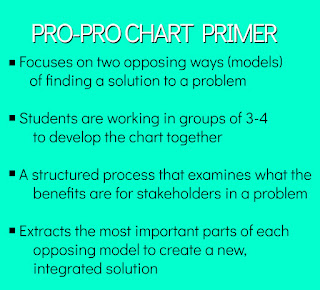“We really don’t have a plan”
"We really don't have a plan". That is the spirit of risk taking and experimentation that Sylvonna Brennan and Andrea De Mendonca took when launching into the unknown and piloting “Engology”, an integrated Grade 11 English and Biology course this past fall. You may have seen their article in the Toronto Star. We were interested in digging a little deeper to get an understanding into the conditions that allowed this great combined credit course launch and where it will go from here.
The basics of their integrated course are easy to understand. Students were offered an English/Biology package of courses in the afternoon. Topics from both sets of curriculum were woven together and both teachers worked closely on creating a coherent experience for students.
Both Sylvonna and Andrea were open to admitting that they were working alongside their students in this new adventure. Many times during the semester they empowered their students to advocate for how they wanted the courses to progress. There were times when the students would push back on topics or evaluations that they did not like and the teachers valued that student voice.
| Rethinking Reading Lists in Engology |
Both teachers expected to attract the high achievers in their building to the integrated program. However, in practice this isn’t what happened. Their program attracted the dreamers at their school. It attracted students who wanted to take a risk and try something new and because of that, the cohort of students who joined them were the right kids for the course.
The community in the room grew organically over the semester as students had their beliefs about the Engology credit tested. Many thought it was going to be a bird course and they were soon proved wrong. The course was different, but not easier. Students and teachers noticed a strengthening of their “soft skills” as they were asked to think critically and communicate often about what they were learning.
| Communicating understanding in new ways |
This lead to a culture of risk taking in the Engology classroom. It’s easy to write a test and put down what you know and then forget about it. It’s a lot hard to communicate your understanding in different ways, to apply it, to write stories that weave the science curriculum into english. Students got comfortable with failure because they had embraced a spirit of iteration. They tried, failed and then learned.
For their parts, Sylvonna and Andrea are learning from their successes and failures too. Both are excited to teach the course again in the next school year. They are hopeful that student interest will allow the program to be run in both semesters. Sylvonna dreams about outfitting her classroom with furniture that will help promote discussion in a more relaxed atmosphere. Andrea is looking forward to finding ways to highlight how biology and science are represented in the media. She is dreaming about an assignment where students critique a film or tv show and talk about how science is glorified or misrepresented.
The creation of the Engology course was a project eight years in the making. Much of the day to day planning was done informally, in the hallways between periods. Sylvonna and Andrea exemplify why, when embarking on a creative or innovative act like this pairing of courses, you need to just launch into it, without a complete plan. It is through the lived experience of creating every day that that the magic happens.
What have you dreamed big about? What’s your eight year project that you wish you could try? We’d love to know!
The creation of the Engology course was a project eight years in the making. Much of the day to day planning was done informally, in the hallways between periods. Sylvonna and Andrea exemplify why, when embarking on a creative or innovative act like this pairing of courses, you need to just launch into it, without a complete plan. It is through the lived experience of creating every day that that the magic happens.
What have you dreamed big about? What’s your eight year project that you wish you could try? We’d love to know!

Comments
Post a Comment